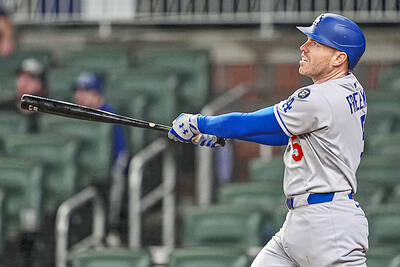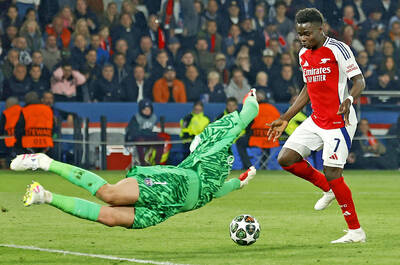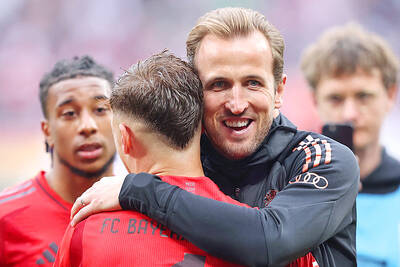If designing the prototypical leadoff hitter, you'd want a player who gets on base often and scrutinizes pitches as if his pupils were surveillance cameras. You'd want a guy who runs like a greyhound and steals like a jewel thief. And if he possesses power too, even better.
How do you find such players?
You search for Sasquatch, rent a motorboat on Loch Ness or pursue Yeti.
So rare are standout leadoff hitters, they seem like myths.
You might think the modern game's power age is responsible. On-base percentage, pitches per plate appearance and stolen bases do not pay as well as home runs and slugging percentage.
Chicks dig the long ball, and baseball's general managers, fans and corporate partners do, too. People pay to see the home run derby before the All-Star Game. Nobody clamors for a timed first-to-third race.
Those who scout the Dominican Republic for players have a saying: "You can't walk off the island."
It means you won't be noticed if you're taking pitches.
So the theme of leadoff men may seem curious.
For every Johnny Damon, there are half a dozen Jose Reyeses, Rafael Furcals and Jimmy Rollinses, players managers try to shoehorn into the leadoff position because of their speed in the hope they'll grow into the role.
A paucity of great leadoff hitters is not a recent phenomenon. It has always been so, even as we were unaware of it.
Because on-base percentage didn't become an official stat until 1984 and a popular one until the 1990s, swift leadoff hitters who stole bases but reached base less frequently than the average player -- players such as Omar Moreno, Vince Coleman and Harold Reynolds -- historically have been overvalued. They weren't outstanding leadoff hitters. Most seasons they weren't good ones, and should've batted elsewhere.
In the 130 years since the founding of the National League, we've seen perhaps 15 Hall of Fame-worthy major-league leadoff men. In baseball's modern era (1900 and later), nly seven members of the Baseball Hall of Fame were predominantly leadoff men (more than 1,000 career games batting leadoff): Paul Molitor, Lou Brock, Richie Ashburn, Lloyd Waner, Luis Aparicio, Earle Combs and Harry Hooper.
falling short
Aparicio stole 506 bases but compiled a .311 on-base percentage. He may have been a Hall of Fame shortstop. He definitely was a lousy leadoff hitter.
Waner didn't steal bases and had an on-base percentage only seven points above the ballpark-adjusted league average, so you can't consider him a great leadoff hitter, either.
Combs (career curtailed by injuries) and Hooper (a fine player, but you could probably name 100 not in Cooperstown who were better) don't merit Hall of Fame plaques, but there are so few standout leadoff batters we'll give them the benefit of the doubt.
Rickey Henderson, Craig Biggio, Tim Raines and Ichiro Suzuki (if he plays as he has for another six seasons) should make the Hall of Fame, and fellow leadoff man Pete Rose would be there if not for something about gambling.
Billy Hamilton and Jess Burkett are the only 19th century players who batted mostly leadoff honored in Cooperstown, said Baseball Hall of Fame researcher Gabriel Schechter.
Stan Hack, Kenny Lofton, Roy Thomas, Brett Butler, Topsy Hartsel, and unconventional ones such as Eddie Yost and Bobby Bonds, were great leadoff men.
We rarely see versatile leadoff men with the speed, power and ability to bat nearly anywhere in the lineup, such as Henderson and Bonds. Mickey Mantle, Willie Mays and poky Ted Williams, for that matter, would've made incredible leadoff hitters but batted lower to make full use of their power.
If Joe Morgan had hit leadoff he would be considered the second-best leadoff man of all time, behind Henderson. But as with Derek Jeter, because of Morgan's pop, managers batted him behind the leadoff hitter. Having the prototypical leadoff hitter guarantees not that he'll be used so.
Makes them harder to find.

Freddie Freeman homered and drove in four runs, Shohei Ohtani also went deep and Roki Sasaki earned his first major league win as the Los Angeles Dodgers beat the Atlanta Braves 10-3 on Saturday night for their seventh straight victory. The Dodgers have won the first two games of the series to improve to 5-0 against Atlanta this year. Los Angeles’ three-game sweep at home early in the season left the Braves 0-7. Sasaki allowed three runs and six hits over five innings. The 23-year-old right-hander gave up a home run to Ozzie Albies, but received plenty of offensive support in his

INTER AWAIT: Superb saves by PSG ’keeper Gianluigi Donnarumma inspired the victory, as Arsenal were punished for misses, including one by Bukayo Saka Arsenal on Wednesday fell short on the big stage again as their painful UEFA Champions League semi-final exit against Paris Saint-Germain left Mikel Arteta to rue his club’s failure to provide him with enough attacking options. Arteta’s side were unable to reach the Champions League final for the first time in 19 years as PSG clinched a tense 2-1 win at Parc des Princes. Trailing 1-0 from last week’s first leg in London, the Gunners made a blistering start to the second leg, but could not convert their chances as Gianluigi Donnarumma’s superb saves inspired PSG’s 3-1 aggregate victory. Arsenal were punished for

Bayern Munich on Sunday were crowned German champions for the 34th time, giving striker Harry Kane his first major trophy, after second-placed Bayer 04 Leverkusen drew 2-2 at SC Freiburg. Bayern’s 3-3 draw at RB Leipzig on Saturday, when the Bavarians came from two goals down to take the lead before conceding a stoppage-time equalizer, meant defending Bundesliga champions Leverkusen needed to win at Freiburg to delay the title party. Leverkusen were two goals down before scoring twice in the final 10 minutes, but Xabi Alonso’s side could not find a third, as Bayern reclaimed the title at the first attempt after

THRILLER: Raphinha gave Barca a 3-2 lead with two minutes remaining of regular time, but Francesco Acerbi equalized the game in the second minute of added time Davide Frattesi on Tuesday fired Inter into the UEFA Champions League final with an extra-time winner that gave the Italians a stunning 4-3 triumph over Barcelona, 7-6 on aggregate. Italy midfielder Frattesi won a tie for the ages under a downpour in Milan when he lashed home in the 99th minute, sending a packed and rocking San Siro wild with joy. Simone Inzaghi’s team will face either Arsenal or Paris Saint-Germain at the end of this month in Munich, Germany, where they would feel they have a great chance to be crowned kings of Europe for a fourth time after